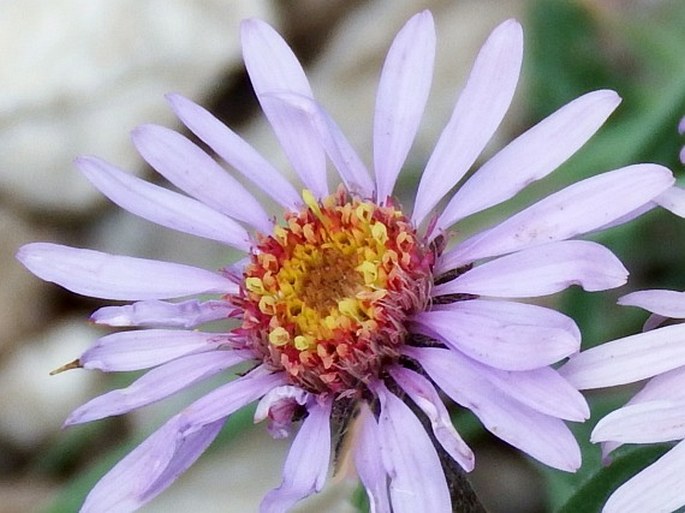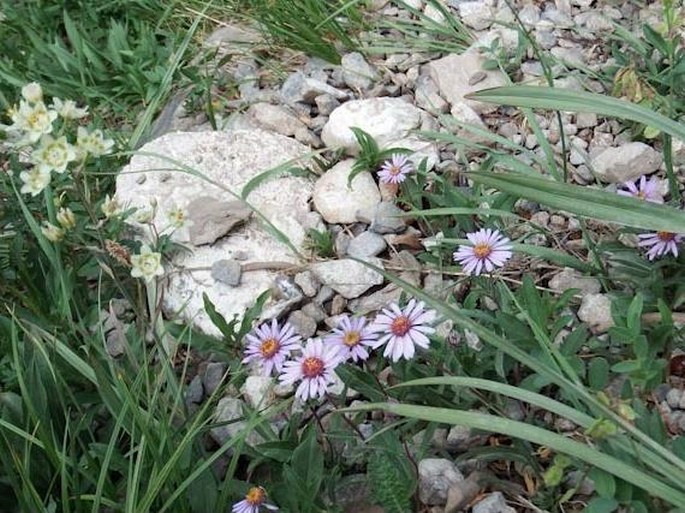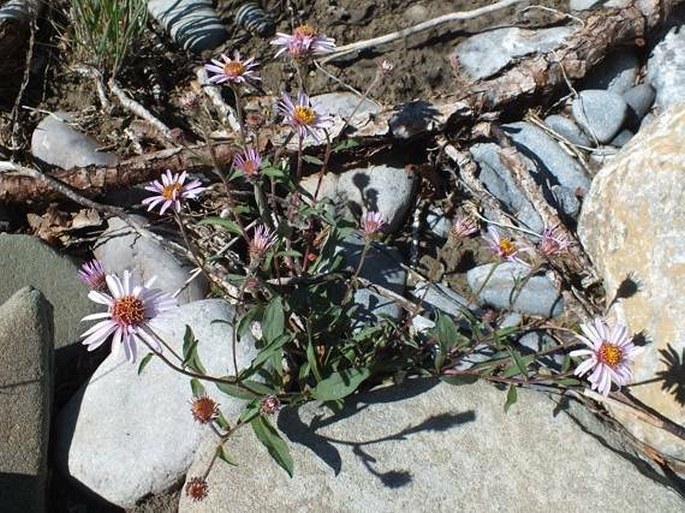Syn.: Aster ircutianus DC., Aster sachalinensis Kudô, Aster sibiricus L., Grindelia sibirica Spreng. ex Link
Family: Asteraceae Bercht. et J. Presl

Distribution: Circumpolar distribution from Siberia of Russian Federation, Kazachstan, China (Heilongjiang), Korea, in Europe, Norway, Russian Federation and in North America, in north western part of the continent, from Alaska, Yukon, Northwest Territories and Nunavut, British Columbia and Alberta and in US in states of Washington, Idaho and Montana.
Ecology: Open, rocky and sandy areas of boreal forest, wet meadows, open woods, along streams and standing water, mountain slopes and meadows. Found at elevations from 0–2200 m. Blooms in July and August.

Description: Perennial herb, stems 10–20(–60) cm tall, in clumps, ascending or decumbent, villous to densely lanate, from slender rhizomes. Leaves alternate, petiolate to sessile, lanceolate, 2–10 cm long, about 2 cm wide, usually with a few small teeth, slightly shaggy, lowest leaves small, soon withered. Inflorescence 1–20 flowerheads, singly or in corymbiform arrays, peduncles villous (shaggy), involucres campanulate, 6–9 mm, 30–80 bracts in 3–4 rows, purplish at least distally; ray florets 12–50, corollas pale violet to purple, sometimes white, 7–17.5 × 0.8–1.8 mm; disc florets 25–125, yellow becoming purplish, tubes longer than funnelform throats. Fruit is an achene, brown, compressed, strongly ribbed, sparsely hairy, pappus brownish, rarely white or yellow.
Use: Some native tribes used the whole plant, including roots to make tea to relieve back pains.
Threat and protection: This species is protected in Europe by the Berne Convention (as Aster sibiricus).



These images were taken in Canada, Alberta, Ha Ling Peak (by Karel Bergmann junior, August 2014), and Alberta, Waiparous (by Karel Bergmann senior, June 26, 2015).


